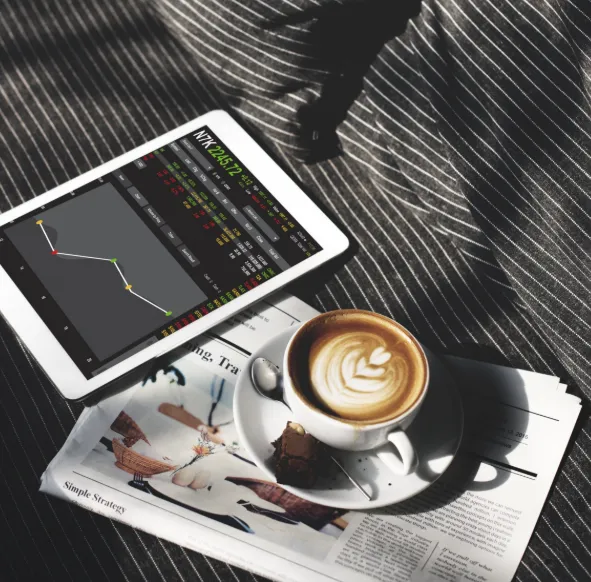Day trading relies on precision, speed, and reliability. A sluggish or unstable internet connection can delay your orders and lead to missed opportunities—or worse, financial losses. To avoid this, traders need an internet setup that delivers high speeds and low latency. But with so many connection types available, how do you know which one is right for your trading setup?
Let’s break down what matters most in internet performance for day trading and how different types of internet services measure up.
Understanding Speed vs. Latency
When evaluating internet performance, it’s important to distinguish between speed and latency:
- Speed (Bandwidth): The amount of data your connection can handle, typically measured in megabits per second (Mbps). This affects how quickly your trading platform can load charts, news feeds, and market data.
- Latency (Ping): The time it takes for your computer to send and receive information from your broker’s servers. This is critical for executing trades with minimal delay.
While speed helps with loading large amounts of data, latency determines how fast your orders reach the market and how quickly responses return. For traders, low latency is just as vital—if not more so—than high bandwidth.
Recommended Minimums
While some trading platforms suggest at least a 3 Mbps connection, that’s only sufficient for basic tasks. If you’re trading multiple instruments, watching live charts, or using algorithmic strategies, aim for a minimum of 20 Mbps with consistently low latency. Also, consider your total device usage—multiple trading machines or apps running simultaneously will require more bandwidth.
Types of Internet Connections for Traders
Satellite Internet
- High-Orbit Satellite: Offers wide coverage but suffers from extreme latency (500–700ms), making it unsuitable for real-time trading. Speeds range from 25 to 100 Mbps.
- Starlink (Low-Orbit Satellite): A newer system by SpaceX that offers better latency (42–60ms) and higher speeds (50–150 Mbps). While more viable than traditional satellite, it’s best suited for swing traders rather than active day traders due to minor lag.
Wireless Internet
- Cellular (3G/4G/5G): Performance varies significantly based on signal strength and congestion. Only 5G in dense urban areas (15–50ms latency) is remotely suitable for trading. Older networks (3G/4G) have higher latency and slower speeds, making them unreliable for trading.
- Fixed Wireless (WISP): Uses antennas to create a line-of-sight connection to a nearby tower. It can provide good speeds (20–150 Mbps) and reasonable latency (10–70ms), but performance depends heavily on your distance from the tower and environmental interference.
Physical Connections
- DSL: Uses telephone lines and can deliver speeds between 1.5 to 100 Mbps with latency ranging from 11–40ms. Its reliability depends on your distance from the service provider’s hub and line quality. While not ideal, it can be acceptable in some areas.
- Cable (Coaxial): Provides higher speeds (50–1,000 Mbps) and low latency (13–27ms). However, performance may fluctuate during peak usage hours in your neighborhood. It’s generally a strong option if fiber is unavailable.
- Fiber: The top-tier choice. Fiber-optic internet offers unmatched speed (up to 5,000 Mbps) and extremely low latency (10–12ms). It’s ideal for high-frequency traders or those running multiple platforms and charting tools simultaneously. The downside is availability and cost.
Tips for Evaluating an ISP
- Ask About Latency, Not Just Speed: Advertised bandwidth isn’t the whole story. Make sure to ask providers about average latency and stability.
- Run Tests at Peak Hours: Internet speed can vary depending on network load. Test during the times you’ll be trading.
- Check Local Reviews: Performance varies by region, so gather feedback from other traders or neighbors.
- Avoid Overcrowded Networks: If you choose a shared connection like cable, ensure your provider offers reliable service even during busy hours.
Ranking Internet Types for Day Trading (Best to Worst)
- Fiber: 50–5000 Mbps | 10–12ms
- Cable: 50–1000 Mbps | 13–27ms
- DSL: 1.5–100 Mbps | 11–40ms
- WISP: 20–150 Mbps | 10–70ms
- 5G Cellular: 200–400 Mbps | 15–50ms
- Starlink: 50–150 Mbps | 42–60ms
- High-Orbit Satellite: 25–100 Mbps | 500–700ms
Final Thoughts
Your internet connection can be the difference between a profitable trade and a missed opportunity. While speed matters for loading and streaming data, low latency is what ensures that your trade orders reach the market without delay.
If you’re serious about day trading, prioritize fiber where available. Cable and DSL can also suffice if latency is kept low and speeds are stable. Wireless and satellite options should only be considered as backups or in areas where wired connections aren’t feasible.
Making the right choice will enhance your trading experience, reduce execution lag, and ultimately protect your bottom line.













